Are mountain goats dangerous? Our guide on what to do if you meet one
Are mountain goats dangerous? We detail the behaviour of these surefooted crag dwellers and guide you on how to stay safe around them
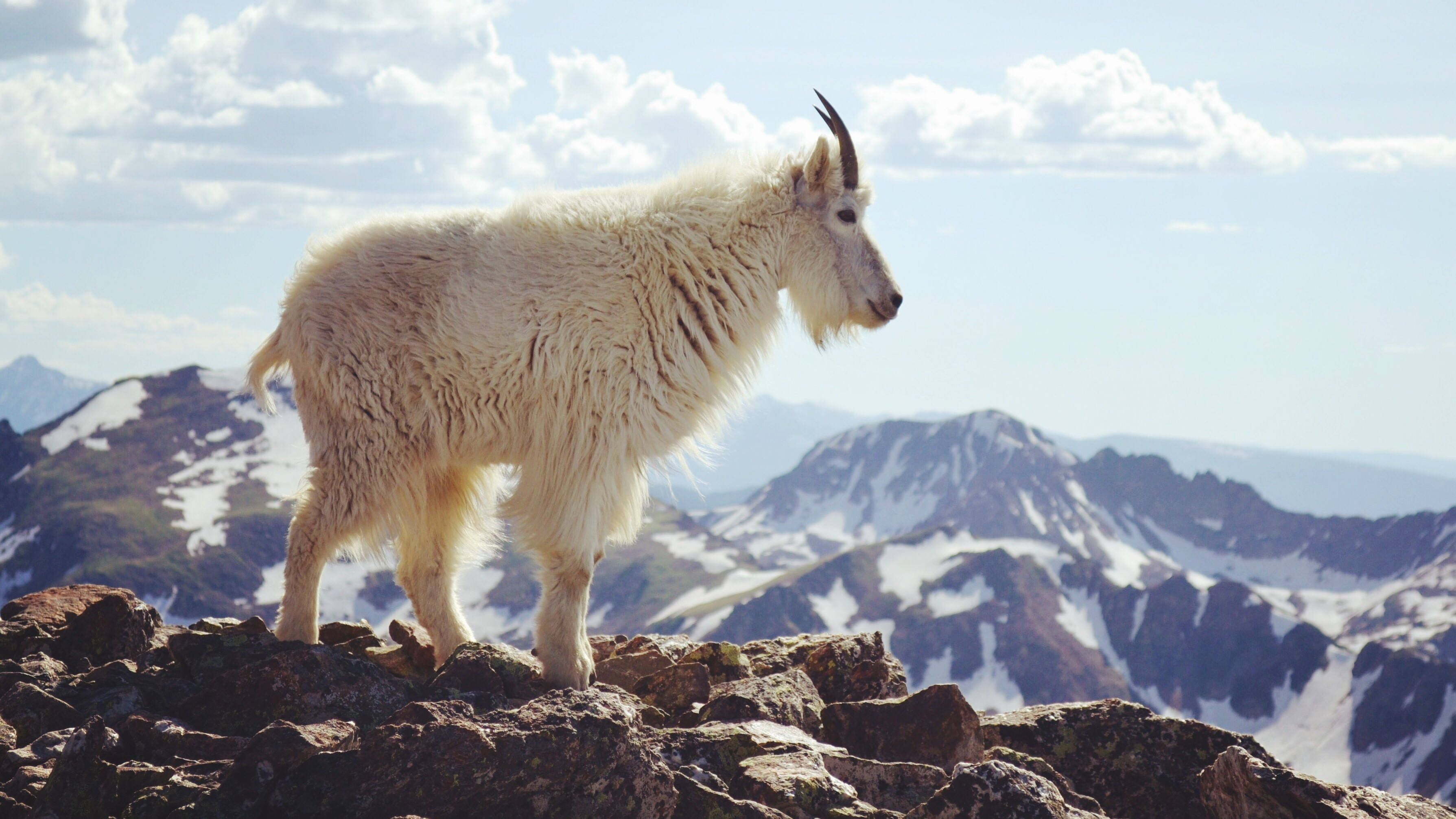
They're an astonishing sight, especially when scaling sheer cliff faces, so it's no wonder that we are drawn towards observing mountain goats. The regions they inhabit are the kind of high-altitude hiking paradises that are on all our bucket lists, so it's no wonder that trail users will often encounter them.
However, these specialised alpine beasts can certainly look after themselves, which you'd expect of any animal that thrives in the high mountains. Incredibly, they're even able to take down predators like grizzly bears with their horns, as one goat managed in 2021. So, it's logical that, before grabbing your hiking boots and hitting the trails, you might ask: are mountain goats dangerous?
One of our resident hiking aficionados has been speaking to wildlife experts to answer this question, as well as providing more detail about them and what to do if you encounter one.
Are mountain goats dangerous?
Mountain goats are quiet, elusive herbivores, and attacks on humans are extremely rare. However, they are known to be unpredictable and skittish – they may attack if they feel threatened.
"Mountain goats are wild animals and capable of causing serious injury or even death," says Sarah Creachbaum, Superintendent of Olympic National Park where a mountain goat fatally gored a hiker in 2010. This incident, however, does appear to be the only known such fatality.
What makes mountain goats potentially dangerous has more to do with their powerful bodies and sharp horns than it is to do with their behavior. Their sharp horns can be lethal – just ask the 170lb grizzly bear that was taken out by a mountain goat defending itself in 2021.
In areas where mountain goats have become accustomed to humans – or worse, fed by humans – they may stand their ground when you meet one on the trail. Further, they have been found to have a taste for the salt found in human sweat and urine and there have been instances of mountain goats pestering hikers for their sweat-soaked backpacks.
All the latest inspiration, tips and guides to help you plan your next Advnture!
If you meet a mountain goat on the trail, follow the simple steps below. For more detail on each step, click the links or see further down this feature:
- 1) Steer clear – as with all wildlife encounters
- 2) Don't feed them – it could be bad for their health
- 3) Keep your gear close by – they're attracted to human sweat
- 4) Don't pee on the trail – there's salt in your urine
- 5) Make noise – it should scare it away
- 6) Run – if it charges at you – they're not known to give chase for long
- 7) Grab it by the horns – if unable to get away
Meet the expert

Julia moved to the US for university and developed a love for the great American outdoors. She enjoy tackling backcountry trails and bagged several Colorado 14ers while she was at it. Now back in her native Scotland, she still keeps a close eye on developments across the Pond. She still enjoys watching mountain goats on occasional trips to the European Alps.
What are mountain goats?
- Mountain goats aren't technically goats at all but are related to gazelle, antelope and bison
- They grow to about 3.5 feet tall, have long, sharp horns and muscular legs
- Mountain goats are found in high alpine environments
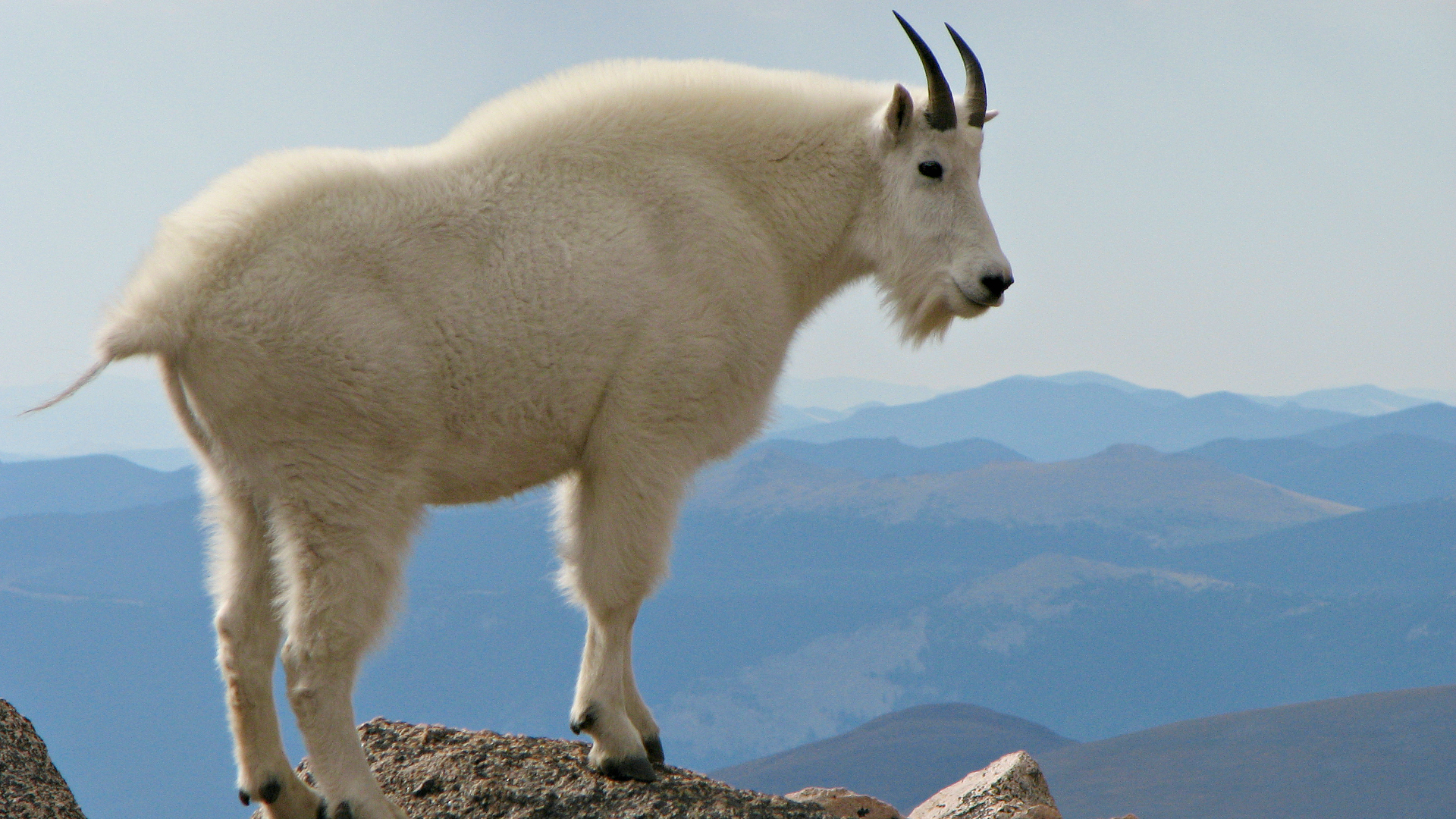
Despite their name, mountain goats are not actually goats at all. Rather, they are in the same cloven-hoofed family that comprises animals like gazelles, antelopes and bison. In appearance, however, they do very much resemble goats, albeit ones with long, shaggy white hair.
Mountain goats stand at about 3.5 feet tall at the shoulder and on the larger end of the scale can weigh up to 300lbs. They sport curved black horns that are extremely sharp and can be 2-10 inches long and they use these to stab each other in fights. Their powerful, muscular legs and broad hooves make them extremely nimble and agile on steep, rocky cliffs and icy terrain.
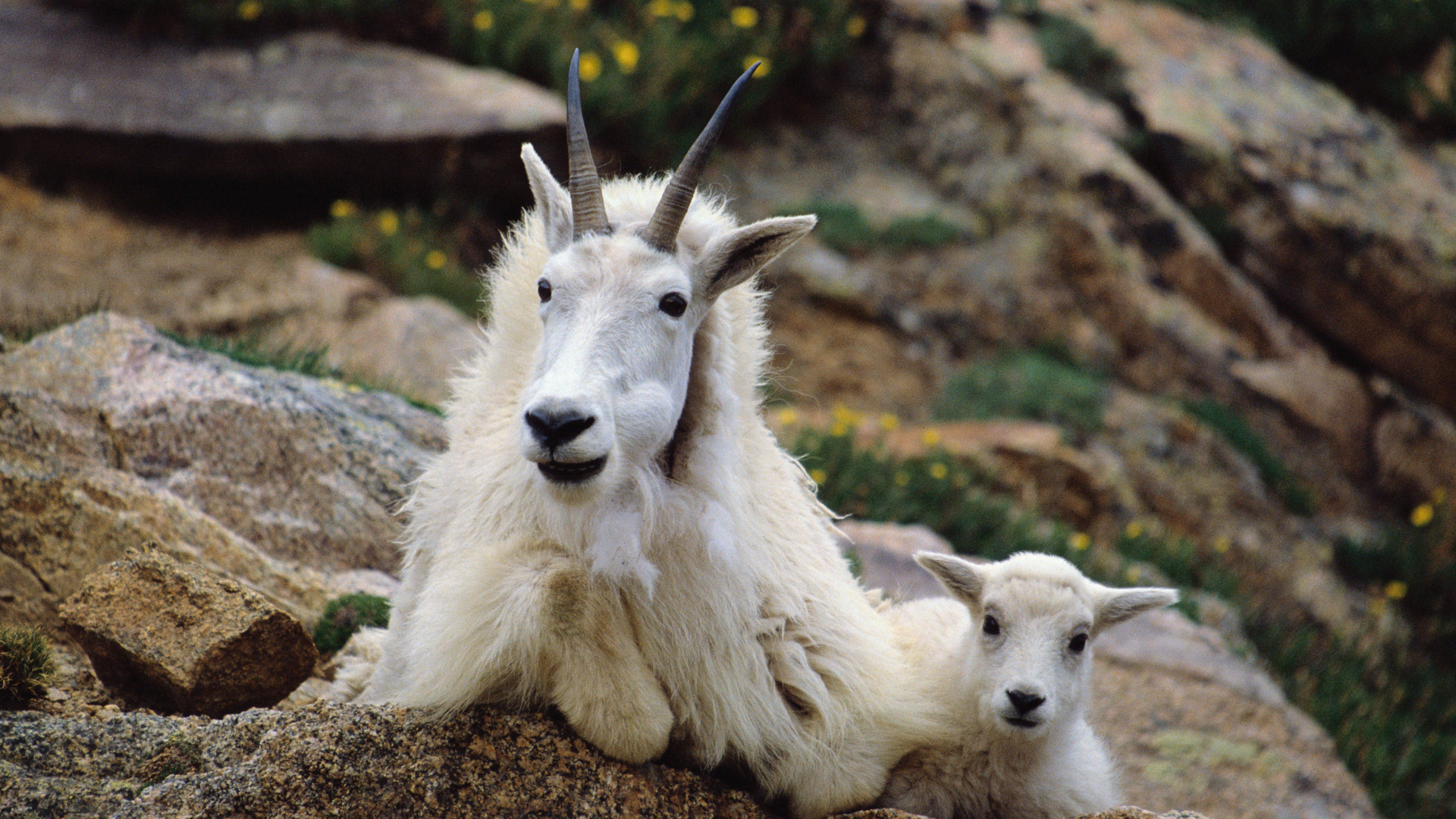
Mountain goats are native to subalpine and high alpine environments in western North America, primarily in the Rocky and Cascade Mountain ranges. They are mostly found in British Columbia, Alaska and sometimes on Colorado’s popular 14ers. They typically reside above treeline in summer, so they tend to be elusive to those of us that don’t like to hike. If you like to adventure up high, you may see a solitary male mountain goat while the females tend to roam in herds and are more territorial and prone to fighting. Because of their white coat, mountain goats often blend in to the snow and are quite difficult to spot.
What to do if you encounter a mountain goat
- It's not usually a problem to encounter a mountain goat on the trail
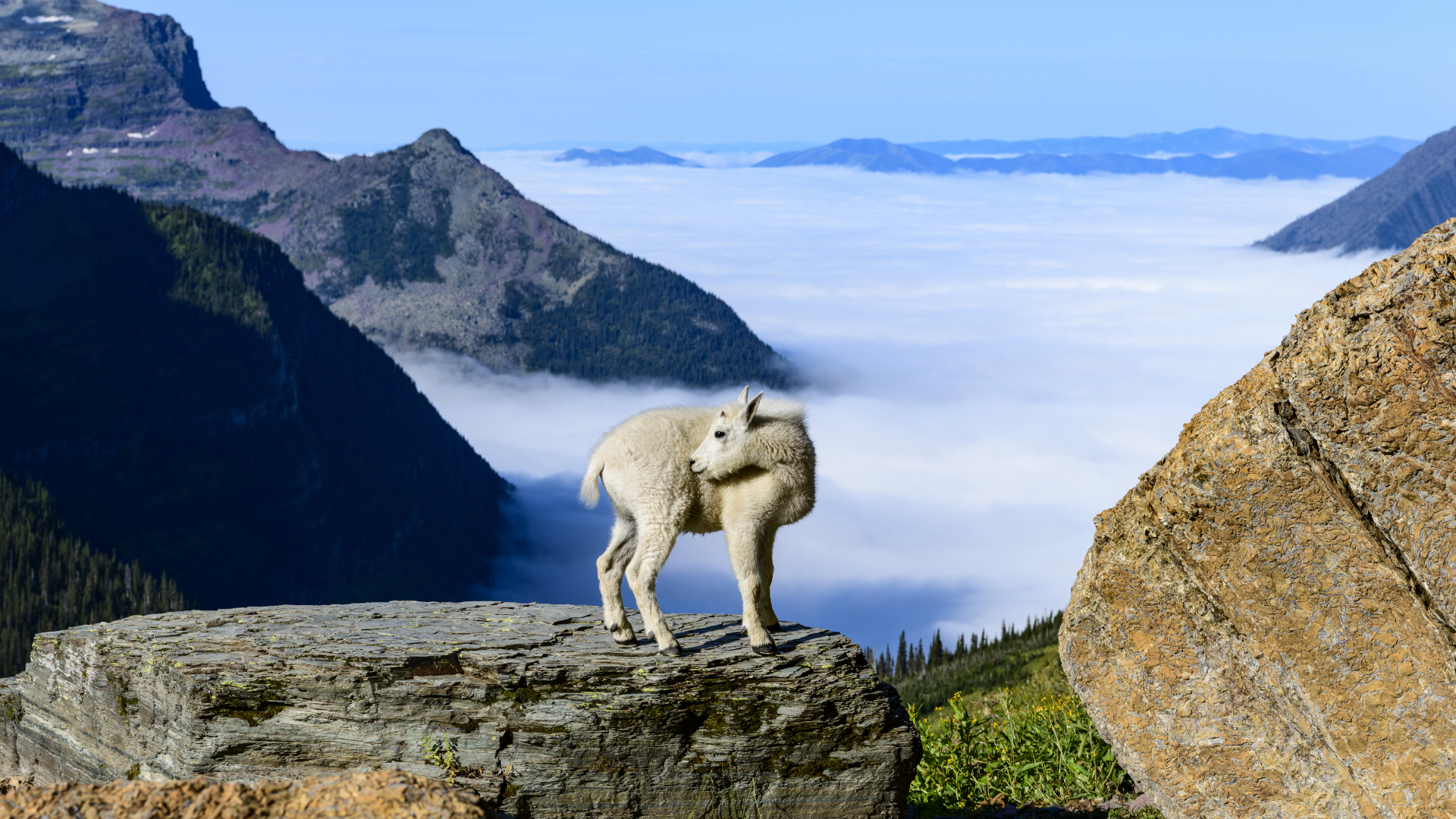
If you encounter a mountain goat on the hiking trail, it’s not usually a problem. However, you certainly don’t want to attract a mountain goat to you with your behavior, or make one feel trapped or threatened. If you’re hiking in an area with mountain goats, use the following measures to stay out of harm’s way, or protect yourself if they become aggressive.
Steer clear
The first rule of thumb is basically the same for all wildlife encounters – don’t approach them and give them a wide berth. Creachbaum advises you to always maintain a distance of at least 50 yards from any park wildlife, including mountain goats. For those of you wondering, that’s about the length of a football field. If you realize the goat is moving towards you, slowly move away.
Do not feed the goats
For everyone’s safety as well as your own, please don’t feed mountain goats. Yes, they will like being fed and it will probably allow you to get a great photo for Instagram, but doing so is bad for the goats’ health and encourages them to approach future hikers on the trail which could lead to a sticky situation down the line if not today.
Keep your gear close by
If you’re in an area where there are mountain goats, keep any sweaty gear on your person rather than draping it over a nearby rock to dry out in the sun. Though mountain goats are drawn to the salt in your sweat, they’re much more likely to stay away if the sweat is on your body.
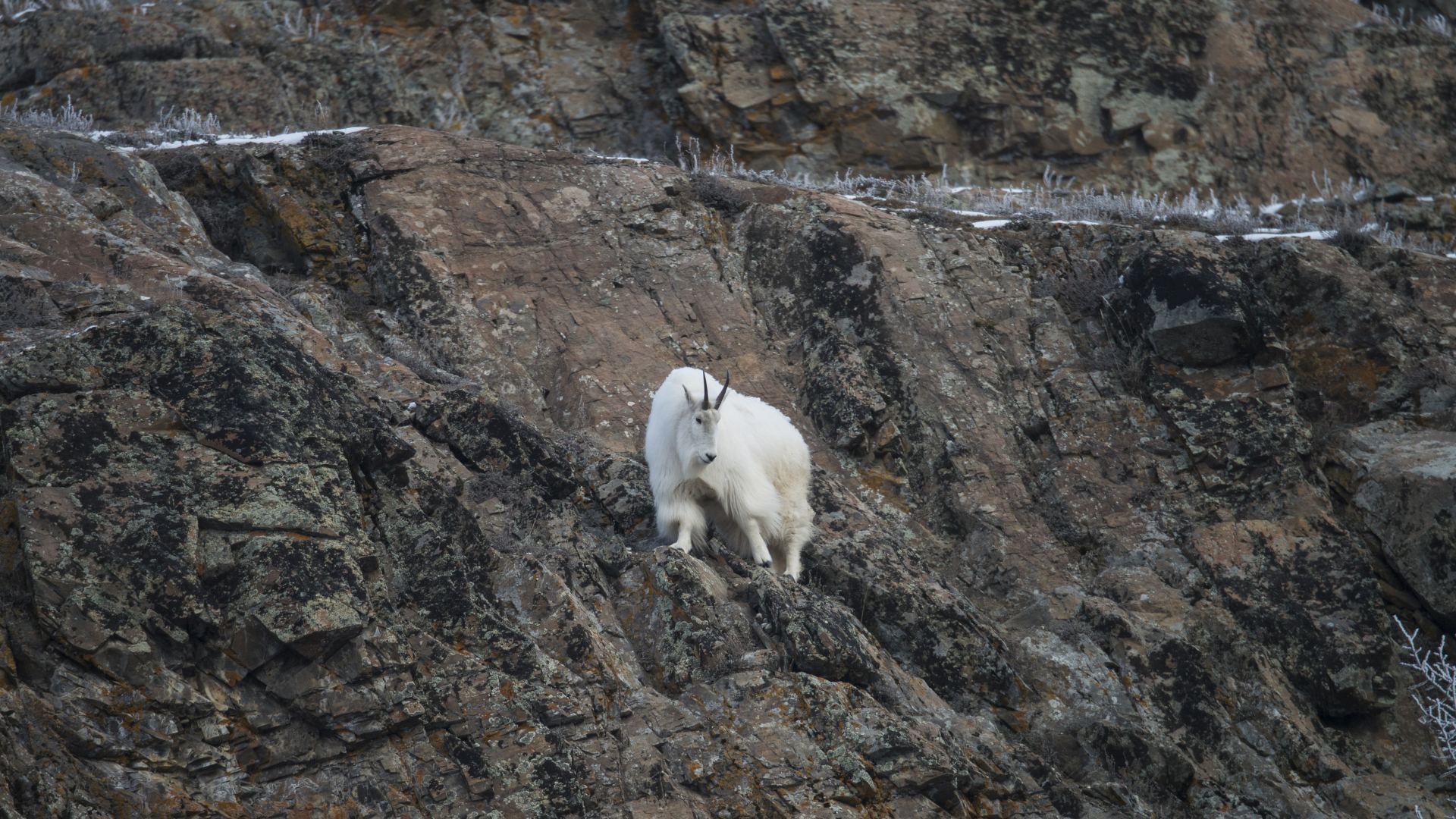
Do not pee on the trail
This is general hiking etiquette as well as mountain goat safety, but if you’re hiking and you have to go, get at least 50 yards from the trail before you do so. That way, if mountain goats are drawn to the salt in your urine, it won’t entice them close to other hikers.
Make noise
Should a mountain goat approach you, yell and wave your hiking poles or your arms around to scare it off. If it is acting aggressively towards you, throw rocks at it.
Run
If a mountain goat charges at you, you probably can’t outrun it but you should still try. They are not known to give chase for very long and mostly just want you out of their way, so you might be able to get to safety.
Grab it by the horns
If you’re unable to run away and a mountain attacks you, your best hope is to grab it by the horns. Their horns are sharp and they will whip their heads around when attacking to cause maximum damage, so you may be able to keep it at arm's length until someone else can help to drive the mountain goat off. Be sure to report any mountain goat attacks to park rangers or wildlife officials in the area.
Julia Clarke is a staff writer for Advnture.com and the author of the book Restorative Yoga for Beginners. She loves to explore mountains on foot, bike, skis and belay and then recover on the the yoga mat. Julia graduated with a degree in journalism in 2004 and spent eight years working as a radio presenter in Kansas City, Vermont, Boston and New York City before discovering the joys of the Rocky Mountains. She then detoured west to Colorado and enjoyed 11 years teaching yoga in Vail before returning to her hometown of Glasgow, Scotland in 2020 to focus on family and writing.

